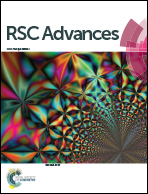Degradation of soil-adsorbed DDT and its residues by NZVI addition
Abstract
Dichlorodiphenyltrichloroethane (DDT) is a highly persistent and toxic chlorinated pesticide. Market-grade DDT is a mixture of 4,4-DDT (85%), 2,4-DDT (15%) and trace amounts of 4,4-DDD, 2,4-DDD, 4,4-DDE and 4,4-DDMU. This mixture is commonly known as DDT and its residues, i.e., DDTr compounds. Due to their strongly hydrophobic nature, DDTr compounds are mostly partitioned into soil and sediments in the natural environment. Preliminary aqueous phase experiments showed that DDT and DDD were degraded by NZVI, with the degradation rates being 2,4-DDT > 4,4-DDT > 2,4-DDD > 4,4-DDD. NZVI addition to soil contaminated with DDTr compounds resulted in rapid reduction in soil-phase 4,4-DDT and 2,4-DDT concentrations and increase in soil-phase 4,4-DDD and 2,4-DDD concentrations, indicating conversion of 2,4-DDT to 2,4-DDD and 4,4-DDT to 4,4-DDD. Multiple addition of NZVI resulted in complete degradation of soil phase 4,4-DDT and 2,4-DDT and reduction in concentrations of 4,4-DDD and 2,4-DDD. Considering the extremely hydrophobic nature of DDTr compounds and their consequent unavailability in the aqueous phase, only direct soil-phase interaction between DDTr compounds and NZVI can explain these experimental observations. A mathematical model incorporating soil phase DDTr–NZVI interactions could explain and simulate the experimental data adequately. Mass balance on DDTr concentrations in soil indicated that ∼40 percent of the DDTr initially present in soil could be removed through the first NZVI addition. Further NZVI additions were successively less effective in removing DDTr from soil and after four successive additions of NZVI, ∼64% reduction in soil-phase DDTr concentration was achieved.


 Please wait while we load your content...
Please wait while we load your content...